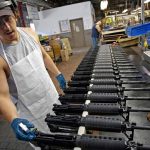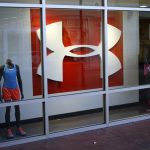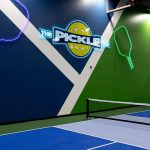The outdoor market in the U.S. slowed slightly in May after reporting a slight up-tick in April. While consumers are still looking for close-to-home recreation options, they may be looking to use their existing equipment instead of investing in new upgrades. According to retail point-of-sale data compiled by SportScanINFO, overall sales in the outdoor market were down in the lowsingle-digits in May. Footwear and equipment sales both saw declines, while sales of apparel grew during the month.
Outerwear sales outpaced all other Outdoor Apparel categories for the
month, largely due to a particularly wet spring in many major population
areas on the East Coast. Sales of smaller ticket items, like Socks and Apparel Accessories were also strong in the outdoor market. Sales of spring/summer Outdoor Sportswear were down slightly compared to the samemonth last year.
Footwear sales were down in the low-single-digits for the month due to double-digit declines in Technical Hiking footwear and Hybrid/Watershoes. The Light Hiking, Approach/Multisport, and Outdoor Casual footwear categories all saw healthy gains for the month. Sales of Running footwear were up in the mid-single digits for the month, with Performance Trail Running footwear sales increasing in the low-teens. Lower price-point Fashion Trail Running Footwear sales were down in the mid-single-digit range. Sales of footwear accessories, like Insoles and Waterproofing Products saw healthy increases for the month.
Outdoor Specialty Equipment sales saw the biggest declines in May with a double-digit decrease in overall sales. However, the results were more
mixed than the overall number indicates. Lifestyle Packs and Bag sales declined for the month, but sales of Technical Packs increased, especially Internal Frame Packs. Sales of Hydration Systems were down, but sales of Waist Packs with Bottles were up in the double-digits. Sales of smaller, lower price-point accessories that are essential grew in May, while sales of big ticket items slowed.
The one category that has continued to grow in spite of economic fears is Water Bottles. In particular, Metal Water Bottle sales are increasing faster than any other category. While the initial impact of the BPA scare is old news, Metal Water Bottle sales continue to grow in spite of BPA-free plastic alternatives.
Many outdoor retailers feel that there is little or no education on the risks of BPA and rumors and speculation are driving sales of metal bottles more than actual facts. “At this point people are buying the metal water bottles for two reasons – first, they are often a more convenient shape, and secondly, they're tired of their friends shrieking when they see them drink from a cancer bottle,” said Darren Bush, owner of Rutabaga Paddlesport Shop in Monona, WI.
One online retailer who asked to remain anonymous said that consumers simply dont know that plastic bottles can be safe. “Overly simplified, the consumer view is that BPA is bad. BPA bottles are plastic. Therefore, plastic equals bad. Metal bottles are not plastic, therefore metal bottles are not bad,” he said. Kim Walker, co-owner of Outdoor Divas in Boulder, CO, also feels like consumer education about BPA-free plastic is virtually non-existent, “In our opinion people are purchasing the metal bottles mainly because of plastic safety issues. However it seems most people have heard about issues through the grapevine as opposed to doing their own research. I think consumers are
using the safety issue as an excuse to try something new.”
Another factor driving sales is environmental awareness. While pre-bottled water was en vogue for nearly a decade, growing environmental concerns over the carbon footprint of pre-bottled water has created a market for stylish reusable water bottles. Sigg has compiled information that outlines the impact of pre-bottled water very succinctly. According to Sigg, scientists say that you can fill a PET (the plastic pre-bottled water bottles are generally made from) bottle ¼ of the way
with oil to symbolize how much energy goes into every bottle.
Klean Kanteen, one of the fastest growing metal bottle brands, sees the issue in this light. “I think people are just generally being turned off by plastic, in part because of the BPA concern and in part because most plastic in consumer products are petroleum-based, thus pulling from a non-renewable resource that by its very nature, contains petrol chemicals, and though recyclable, they are predominantly entering landfills and oceans rather than being recycled,” said a spokesperson for the company.
KOR, a relative newcomer to the water bottle category, was one of the early adopters of BPA-free plastic. The companys founder and CEO, Eric Barnes, agrees that there needs to be more consumer education and cited several points regarding safety and environmental issues. “The BPA scare has set in motion a trend that perhaps all plastics are unsafe and that metal or aluminum are a more health-safe and environmentally-friendly option, which is not necessarily true.
KOR Water identified BPA as an issue early in 2005 and began working with Eastman to use Tritan, a BPA-free, highly durable and glass-like material that is used by many now making reusable bottles,” he said. “Regarding the belief that metal bottles are more earth-friendly, people miss the fact that it takes an estimated 700% more fossil fuel and releases 14 times more greenhouse gases to produce a steel bottle than the comparable plastic bottle.”
While environmental concerns are certainly moving to the forefront, it is impossible to discount the power of a growing trend. Since there is little difference between metal and BPA-free plastic in term or health or environmental impact, Styling is clearly playing a role. “At this point, metal bottles have become a fashion/fad thing,” said Joe Hyer, owner of The Alpine Experience in Olympia, WA. “Virtually all of our customers coming in know they can get plastic, BPA free bottles. They are paying a premium for metal, primarily because it is the cool new thing to be associated with the outdoors.”
While metal bottles are growing in popularity faster than any other water bottle category, plastic bottle sales are still increasing, just at a much slower rate. In addition, the BPA scare has changed the face of the water bottle category permanently. While outdoor specialty water bottle sales were once dominated by a single brand, there are now over a dozen brands vying for the top spot in this category.











